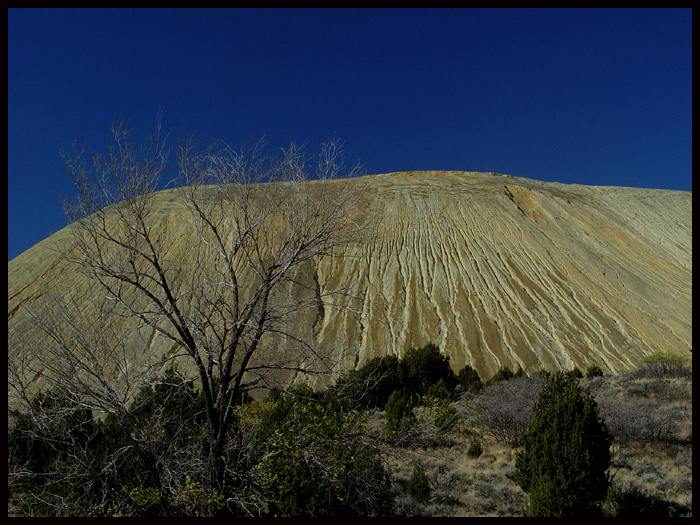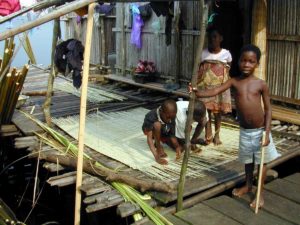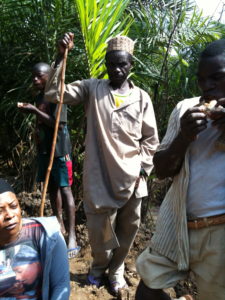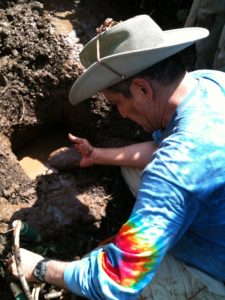
This segment of the LIFE TO LAND INITIATIVE is being designed to be an environmentally sensitive project in order to Give Life to Land in Sub-Saharan Africa.
It has been designed to clean mine waste sites throughout the region. Such sites were created by mining refuse that was simply dumped in heaps with no thought or real understanding regarding the damage such dumping caused the environment.
Technological evolution in biological metallurgy has allowed the development of a special Process. This Process, developed by Mark I. Farber and James Olson (www.olsontankservices.com) extracts toxins and hazardous material from the wastes. These harmful elements can be arsenic (a naturally occurring material) or cyanide and mercury (materials added by man). These are by no means the only harmful materials that can be present. To date, the process, with modifications has been able to handle every type of hazardous and toxic materials. These materials can be eliminated, recycled or modified for either reuse or economic reward. As a result, the remaining material is cleaned of hazards, thus providing environmental benefits heretofore unheard of in ecological circles.
The process results in the reclamation and creation of many different and varied products including those listed below:
a) Agricultural Fertilizer (Soil Amendment )
b) Road Aggregate
c) Concrete Aggregate
d) Chemicals

Up until the last several decades, practitioners engaged in mining practices with ignorance and/or denial of the damage caused to the environment. There are thousands of sites around the world where dangerous concentrations of waste, slurries, slag heaps and tailings have been abandoned and left as toxic gifts to future generations.
These processes are an effective and efficient method to extract the maximum amount of usable materials from these abandoned areas. Life to Land has decided to publicly focus its efforts to clean up the land and, in the process, produce and sell by-products that can be recycled back into the land and used to enhance the environs in and around these dangerous areas. Hence making them usable again, the way ‘Mother Nature’ intended.
These dangerous and hazardous materials work their way into the water systems and food supply. With the passage of time, the water becomes contaminated through the leaching of chemicals into the local water tables. Acid rain falls on the large leached cyanide laced tailing piles exacerbating the problem.
It is only a short progression, both in process and time, to enter the food supply. The contaminated water is absorbed or swallowed by the plants and animals we depend on for our survival. There is no shortage of scientific evidence regarding the short and long term negative effects to the well-being of humans, wildlife and the entire eco-system. The responsible parties have, for the most part, disappeared into history. Where responsibility can be traced to surviving institutions or individuals, the projected cost of clean-up often exceeds the financial capabilities of the accountable parties.
 The L2L Process accomplishes the trinity of mining remediation. It is:
The L2L Process accomplishes the trinity of mining remediation. It is:
a) Effective (as well as environmentally sound);
b) Cost effective; and,
c) Allows for the recovery and reuse of both light and heavy minerals trapped in the various sites in slurry, slag or tailing forms.
The core difference between the L2L Process and most others is that it does not contain the unwanted and dangerous materials. It eliminates them completely at an economical cost. It provides a recovery method which minimizes the use of harmful chemicals and minimizes the potential for harmful materials escaping into the environment. It also transforms many harmful components of the source material into forms safer to handle.
The apparatus side is represented with as many as five (5) individual functions and machines. The functions are determined by the host material which can be as few as three depending on the need of the material to be processed. Each stage is separate and apart from each other. Each stage is processed by different and distinct electro-mechanical units.
The L2L Process machines are particularly advantageous for the economical removal of harmful matter and for the economical extraction of desired matter. The L2L Process involves mechanical and (minimal) chemical manipulation of contaminated material. The output includes minerals in recyclable form and a cleaned matter of inert organic and inorganic materials. The safe, inert by-products can be pre-sold into several markets including but not limited to the cement, gravel and aggregate industries and to the agricultural sector as material to mix in with soil to aid aeration and the retention of moisture.
Political, economic, social and impacts
The GREEN clean-up of the earth is still in its infancy. Corporations at the forefront of this clean-up will reap extraordinary profits. Government incentives, both tax and funded, as well as public fervour are propelling corporations to seek new methods of clean-up to take advantage of the trend to end destruction of the earth’s resources. This will cause entire industries to find new sources of revenue to grow and profit in measures heretofore not seen. It will take many generations to process the billions of tons of mine waste to make a dent in the toxins left from the mining industry.

Mark I. Farber